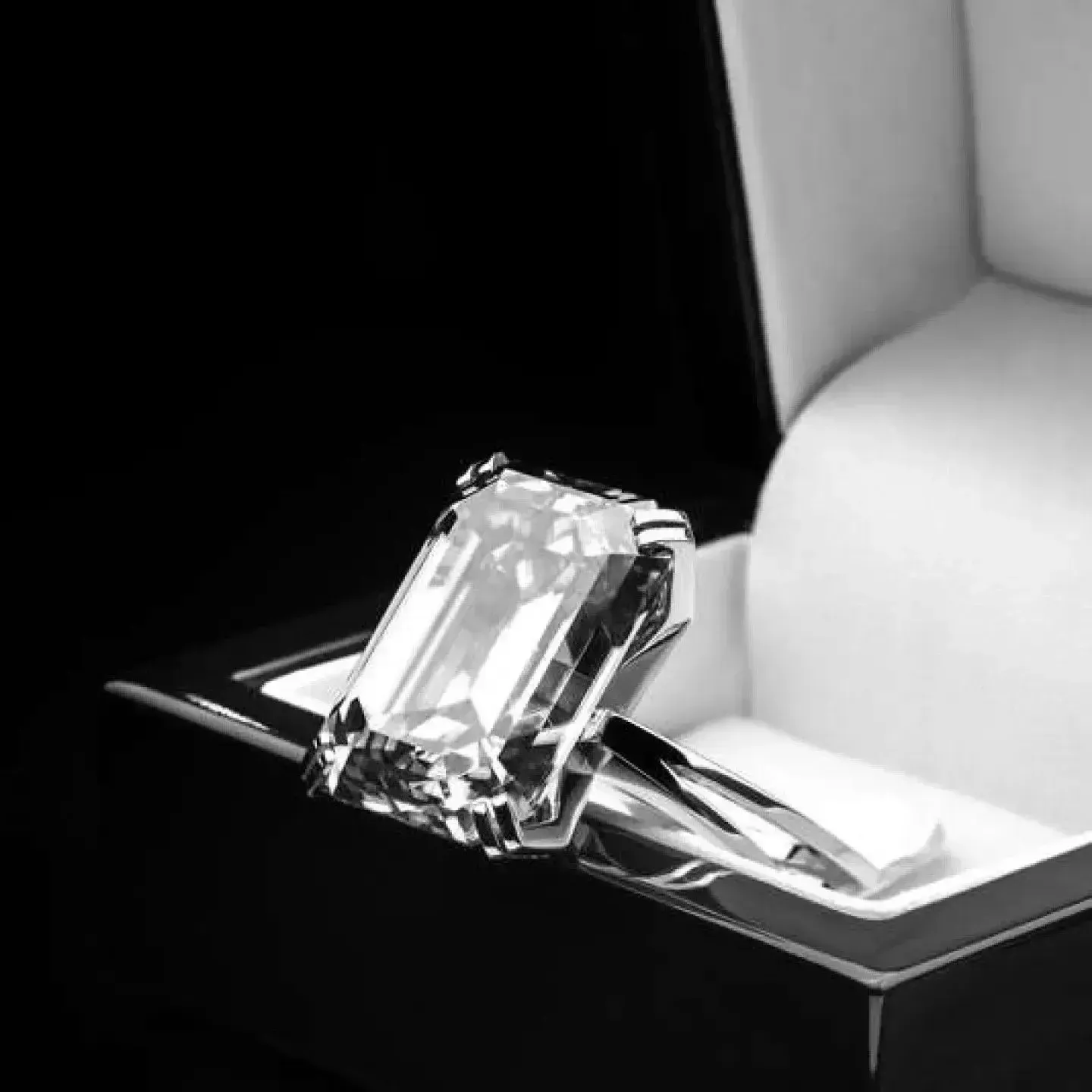"DIAMOND 101: A TUTORIAL"
What criteria do professional gemologists use in determining a good diamond from a great one? Well, as a service to the general public, Bay Appraisals Jewelry has put together the following factors which our industry uses to determine a diamond's overall value.
The Value Of A Diamond
Assessing the value of a diamond depends on a combination of factors, some financial, some romantic, some related to supply and demand. Unlike the precision involved in cutting a diamond, the determination of its value must take into consideration these very imprecise qualities. An appraisal of value begins with a diamond's unique beauty, a factor that keeps the diamond in demand. Another important quality is its relative rarity. All the rough gem diamonds mined throughout the world in one year would fit into one 2 1/4-ton truck. A third factor is its durability: a diamond never changes shape or color, never wears out, requires no upkeep other than an occasional cleaning. A fourth quality is its value as a symbol of love and affection, immeasurable to be sure. And as the sum of all these factors, a diamond is a status symbol, a special measure of a person's standing in the community. Because a diamond has value in the eye of the beholder as well as in the eye of the owner, it enjoys a unique prestige.

While all these factors do play a role in the value of a diamond, there are more practical and precise ways to determine the price of a diamond. These are known popularly as the 4 Cs: cut, color, clarity and carat weight. The last is the precise measure of a diamond's size; the other three describe its quality. While these have been defined almost as precisely as carat weight, the factors of cut, color and clarity occur in infinite combinations. The sum of these diverse qualities, along with the relative rarity of a particular stone, gives the diamond its very complex price structure.
Understanding the 4 C's of Diamond Evaluation
Clarity
True perfection of clarity is extremely rare in diamonds, such top-rated diamonds are called "flawless". But most diamonds contain natural materials known as inclusions because they are within the stone - tiny bubbles, specks of uncrystallized carbon, traces of other minerals that were present when the diamond was formed.
Inclusions affect the price of the diamond because if they interfere with the passage of light through the stone, they diminish its brilliance. A diamond does not have to be flawless to be beautiful. The inclusions in a diamond are its fingerprints: they make each diamond unique.
The Gemological Institute of America (G.I.A.) is a non-profit, non-affiliated organization providing educational, research and testing services to the jewelry industry and gem enthusiasts. Its' color and clarity systems are the standards used throughout the world today.
Cut
The rare, sparkling beauty of a diamond is the result of its unique ability to refract and disperse light. The way a diamond is proportioned and the way the facets are cut to precise angles are all designed to allow as much light as possible to enter the stone from the top, bounce around inside, and then come back out the top again with brilliance, fire and scintillation.
Color
Most diamonds used in jewelry appear colorless or clear to the eye, yet with few exceptions, all diamonds have a tinge of body color. Completely colorless diamonds are extremely rare: only a very small percentage of gem diamonds fall into this category, and for this reason, the top-rated colors command prices well above the next best colors. In the accepted color rating scale used by the Gemological Institute of America, a colorless diamond is classified as "D". All other diamonds are ranked below this in the alphabet, with "E" being the next best color and so on. While the relative difference between "D" and an "E" stone may be discernible only to the most expert eye, that difference may translate into a much higher price.
Carat (Weight)
The carat, which is the unit of weight of gemstone, derives from the carob seed, and extremely uniform seed found in nature. The carat is today defined according to the metric system as 200 milligrams, or one-fifth of a gram. Each carat is further divided into 100 points.

